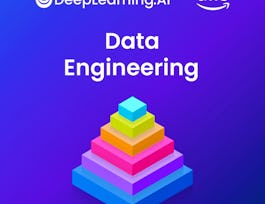A data product is the production output from a statistical analysis. Data products automate complex analysis tasks or use technology to expand the utility of a data informed model, algorithm or inference. This course covers the basics of creating data products using Shiny, R packages, and interactive graphics. The course will focus on the statistical fundamentals of creating a data product that can be used to tell a story about data to a mass audience.



Developing Data Products
This course is part of multiple programs.



Instructors: Brian Caffo, PhD
Sponsored by FutureX
85,825 already enrolled
(2,255 reviews)
What you'll learn
Develop basic applications and interactive graphics using GoogleVis
Use Leaflet to create interactive annotated maps
Build an R Markdown presentation that includes a data visualization
Create a data product that tells a story to a mass audience
Skills you'll gain
- Shiny (R Package)
- Statistical Visualization
- Interactive Data Visualization
- Statistical Programming
- Data Analysis
- Software Engineering
- Software Development
- Data Science
- Data Visualization Software
- R Programming
- Application Development
- Rmarkdown
- Plotly
- Data Presentation
- Data Storytelling
- Leaflet (Software)
- Data Visualization
Details to know

Add to your LinkedIn profile
3 assignments
See how employees at top companies are mastering in-demand skills

Build your subject-matter expertise
- Learn new concepts from industry experts
- Gain a foundational understanding of a subject or tool
- Develop job-relevant skills with hands-on projects
- Earn a shareable career certificate


Earn a career certificate
Add this credential to your LinkedIn profile, resume, or CV
Share it on social media and in your performance review

There are 5 modules in this course
In this overview module, we'll go over some information and resources to help you get started and succeed in the course.
What's included
1 video6 readings
Now we can turn to the first substantive lessons. In this module, you'll learn how to develop basic applications and interactive graphics in shiny, compose interactive HTML graphics with GoogleVis, and prepare data visualizations with Plotly.
What's included
24 videos2 readings1 assignment
During this module, we'll learn how to create R Markdown files and embed R code in an Rmd. We'll also explore Leaflet and use it to create interactive annotated maps.
What's included
12 videos1 reading1 assignment1 peer review
In this module, we'll dive into the world of creating R packages and practice developing an R Markdown presentation that includes a data visualization built using Plotly.
What's included
5 videos1 reading1 assignment1 peer review
Week 4 is all about the Course Project, producing a Shiny Application and reproducible pitch.
What's included
3 videos1 reading1 peer review
Instructors


Offered by
Why people choose Coursera for their career




Learner reviews
2,255 reviews
- 5 stars
68.42%
- 4 stars
23.14%
- 3 stars
6.43%
- 2 stars
1.50%
- 1 star
0.48%
Showing 3 of 2255
Reviewed on Mar 3, 2016
This is a great introduction to some of the many ways to present your data. It's probably the easiest course in the specialisation but shows off an impressive array of widgets and gadgets.
Reviewed on Mar 27, 2016
Good overview of available tools. Lack of practice exercises makes preparing for quizzes difficult. However, the course project does a good job to get your feet wet with Shiny Apps.
Reviewed on Nov 20, 2018
I have learned a lot. The course is simple and very useful. Maybe the assignments should improve because the directions are a bit vague, but in general I liked it.
Recommended if you're interested in Data Science

University of Alberta

DeepLearning.AI

Open new doors with Coursera Plus
Unlimited access to 10,000+ world-class courses, hands-on projects, and job-ready certificate programs - all included in your subscription
Advance your career with an online degree
Earn a degree from world-class universities - 100% online
Join over 3,400 global companies that choose Coursera for Business
Upskill your employees to excel in the digital economy



